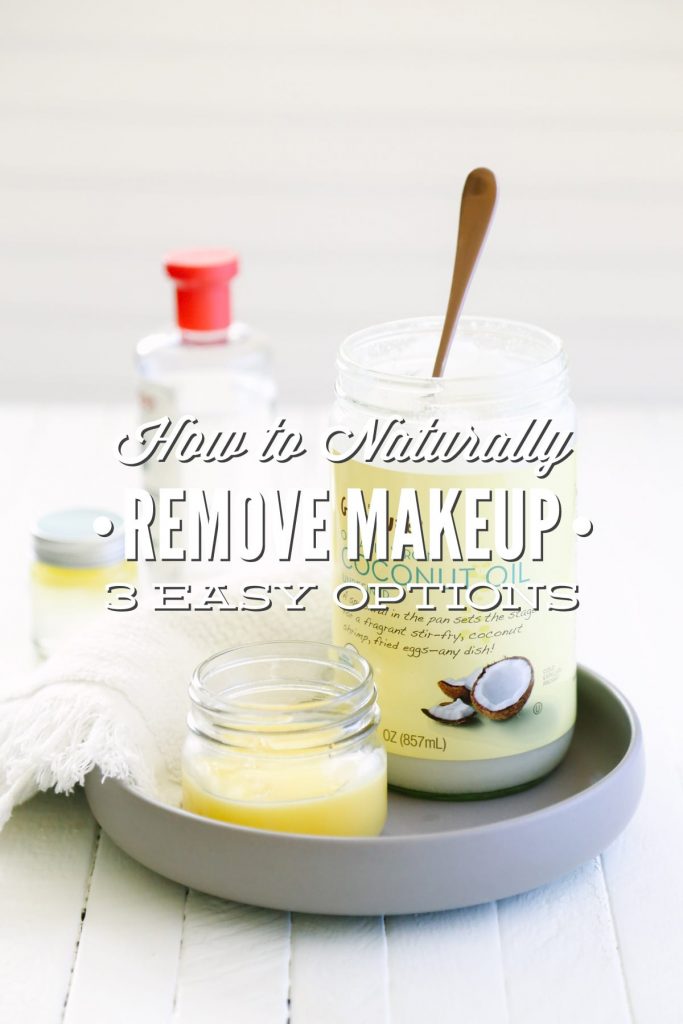
Want to Save This Article?
Enter your email & I’ll send it straight to your inbox. And you’ll get new recipes & tips each week.
A makeup remover? Really?!
Why do I need such a specialty product in my life?
Those were the very thoughts rumbling around in my constantly-questioning mind a couple of years ago, after reading a beauty book which suggested that makeup remover is essential in a skincare routine.
Since the book and author were reputable, I decided to add a makeup remover to my nightly skincare routine. At this point, I had already switched over from using a very expensive department store brand to homemade skincare products, so I decided to research simple options to naturally remove makeup.
Within one night of using a makeup remover, coconut oil, I immediately realized that I was wrong. A makeup remover truly is essential to a skincare routine if you’re going to wear makeup, even more natural makeup. Because here’s the dirty truth: A cleanser is meant to cleanse the face, not remove makeup. Which means every single night I was going to bed with a superficially clean face. I thought my face was clean, but the truth was that most of my makeup remained on my face day after day.
I’ve been using a makeup remover ever since that night of revelation, followed by a gentle cleanser. And each night I’m shocked at how much makeup my trusty makeup remover strips away.
Since reading that book (I can’t even remember the title, but clearly the idea of removing makeup before bed really made an impact on me.), I’ve experimented with a few different natural makeup removers, ranging from simple one-ingredient oils to a homemade balm.
Today, let’s talk about each of the makeup removers I’ve tried over the past couple of years. Each person is different, so my goal is to present to you the natural options I’ve loved for removing my makeup, naturally, and then leave the decision up to you for which makeup remover will work best for your schedule, your skin, and your skincare routine.
How to Naturally Remove Makeup
3 Easy Makeup Remover Options1. Coconut or Olive Oil
This option only requires one ingredient you probably already have sitting in your real food pantry: oil. The basic idea behind using oil to remove makeup is that oil dissolves oil. Since makeup products are generally made of some oils and waxes, and your face secrets oil, an oil, like coconut or olive oil, removes the makeup from your face.
To use coconut or olive oil to remove makeup, apply a small amount of oil to a cotton ball or facial pad, and then gently wipe the face with the oil-moistened pad. Once your makeup has been removed, wash your face with a cleanser. I’m currently using this cleanser. If you’d like a soapy cleanser, I’ve also used this honey face wash recipe.
Pros
Easy to find in your pantry. Only one ingredient. Inexpensive. Last forever (until your oil goes bad).
Cons
Coconut oil, as a skincare product, doesn’t agree with everyone’s skin. I’m not sure if this has something to do with genetics (my personal opinion), or the fact that coconut oil has a higher chance of clogging pores than many other oils. Olive oil really doesn’t have a con, in my opinion.
2. Witch Hazel and Nourishing Oil
After using coconut oil for a few months, which didn’t agree with my skin after repeated uses, I switched over to a combination of witch hazel and a nourishing oil, olive oil. Witch hazel is an easy-to-source, natural ingredient that’s also used as an astringent in skincare routines. For this recipe, I recommend using an alcohol-free witch hazel so it doesn’t dry out your skin.
To make this makeup remover, combine 3 tablespoons of alcohol-free witch hazel and 2 tablespoons of nourishing oil (like olive oil). Before each use, shake the bottle. To use this makeup remover, apply a small amount of oil to a cotton ball or facial pad, and then gently wipe the face with the moistened pad. Once your makeup has been removed, wash your face with a cleanser. I’m currently using this cleanser. If you’d like a soapy cleanser, I’ve also used this honey face wash recipe.
Pros
Lasts a few months. Great for someone who doesn’t want to use 100% oil on their face. Another perk of this recipe is that you can use the basic concept to make reusable face wipes, which are very handy if you travel!
Cons
Since this recipe is very liquid-y, it’s easy to use a bit too much and get some in your eye(s). Not that I know anything about this from experience ;). This is more of a user error than a product con, but it’s definitely worth mentioning. Another con of this recipe is that you need to purchase witch hazel, which isn’t a basic kitchen ingredient. The good news is that witch hazel has many uses, and it lasts a while, so one bottle can be used in multiple ways or kept for an extended period of time.
3. Makeup Remover Balm
This is the makeup remover that I’m currently using, and absolutely adore. Every single makeup remover shared here is a great option for naturally removing makeup, but hands-down this one wins my heart and face. The balm combines the power of an oil, olive oil or jojoba oil for me, and beeswax to create an easy-to-use product.
To make this makeup remover, combine 1/4 cup of jojoba oil (or olive oil) and 1 tablespoon of beeswax. Melt the beeswax into the oil, then pour the mixture into a container, and allow it to cool and harden. To use this makeup remover, apply a small amount of the balm to a cotton ball or facial pad (I scoop a small amount from the jar using the cotton pad), and then gently wipe the face with the balm-moistened pad. Once your makeup has been removed, wash your face with a cleanser. I’m currently using this cleanser. If you’d like a soapy cleanser, I’ve also used this honey face wash recipe.
Pros
Easy to use. No oil spills (once it’s made). Lasts several months.
Cons
More prep time required than the other makeup remover options. Another con of this recipe is that you need to purchase beeswax, which isn’t a basic kitchen ingredient, but it may be used to create multiple other homemade products, and it lasts forever.
Do you have a favorite way to naturally remove makeup?

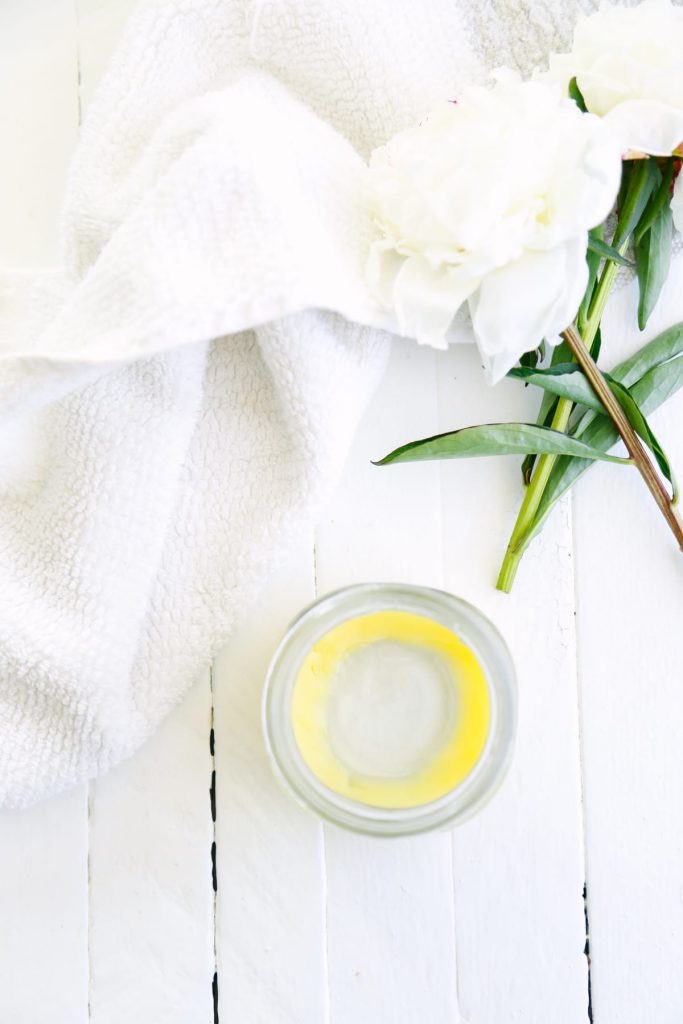
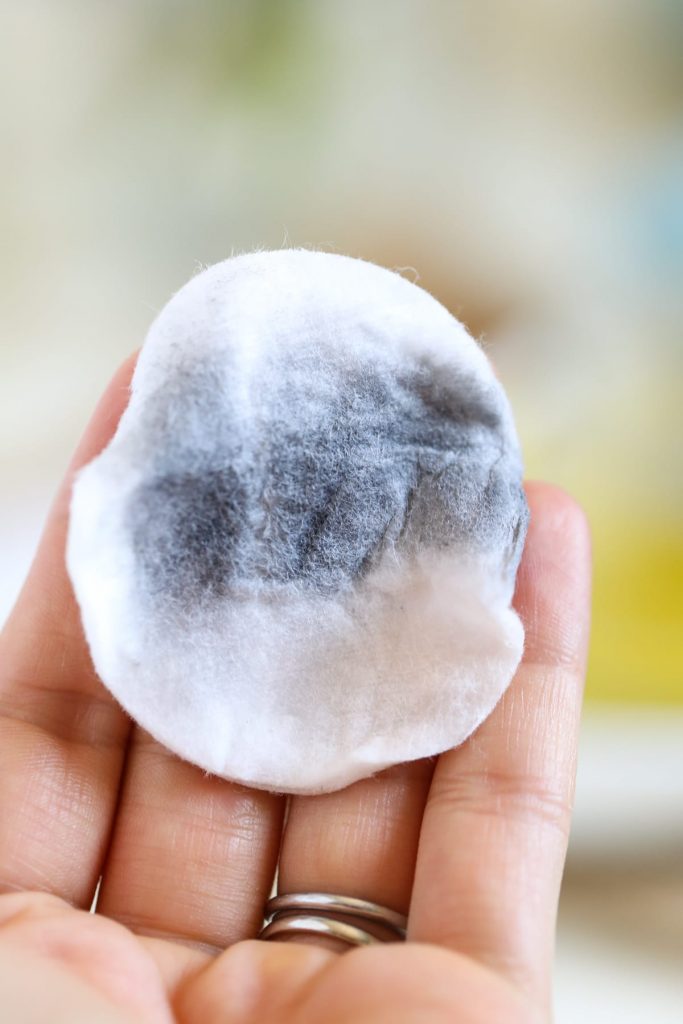
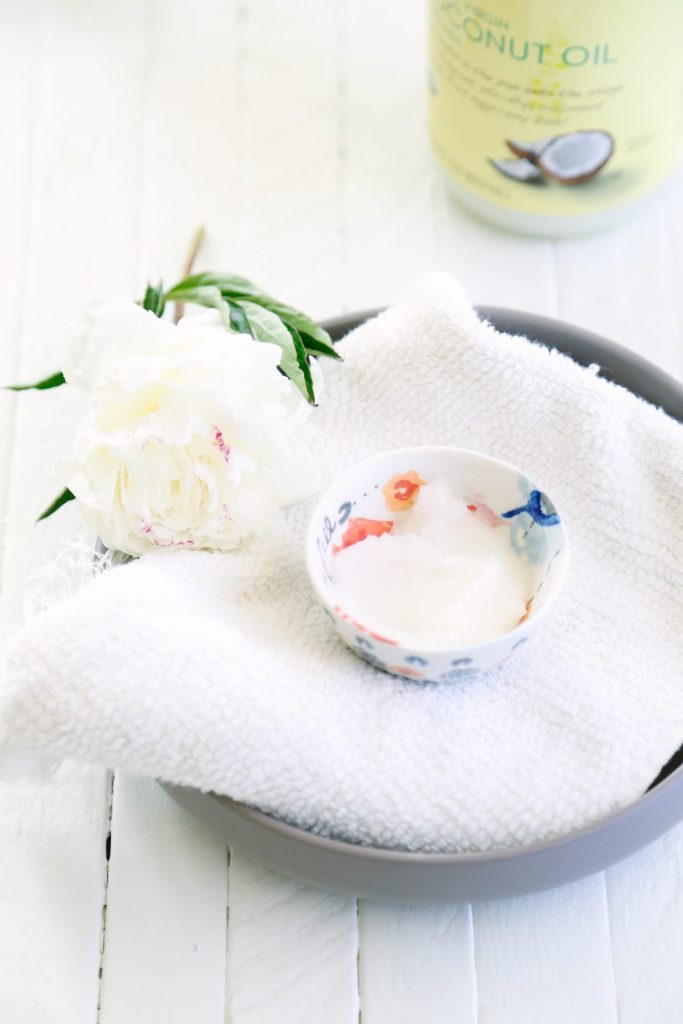
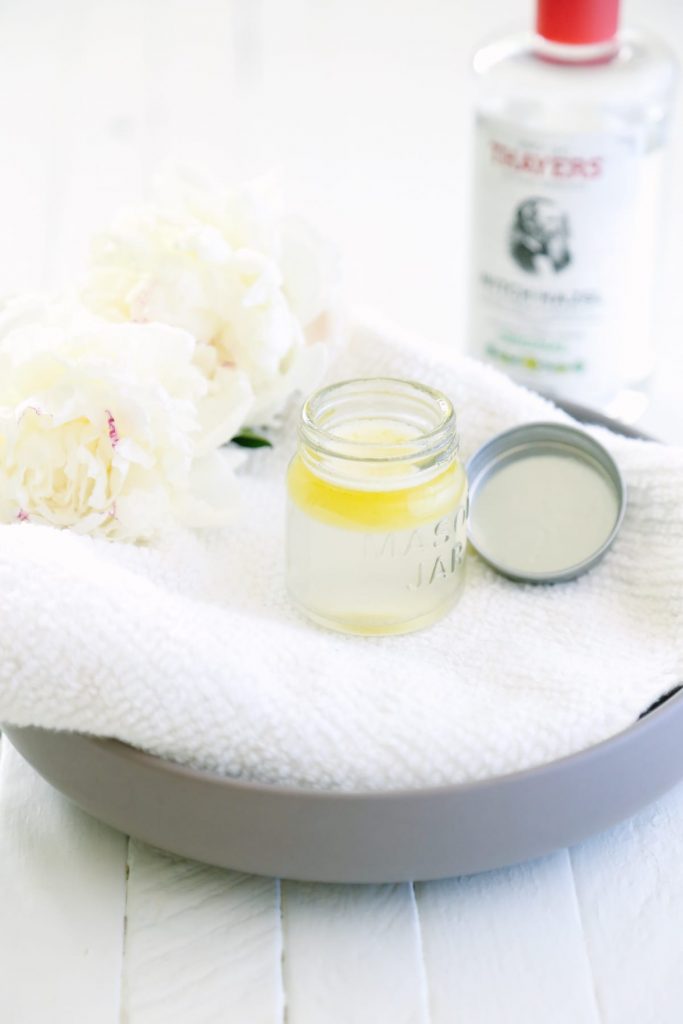

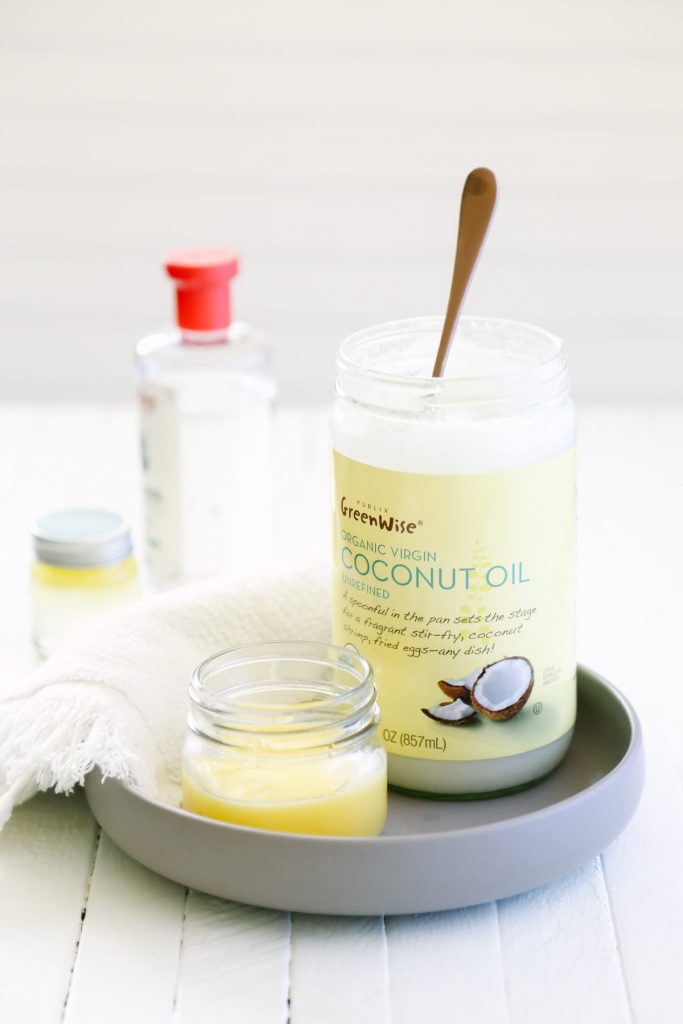
I’m so glad to find this article. I was searching a natural makeup removal so this article can be great for me. I am so excited to try them. Thanks and keep sharing.
I love these ideas. Thanks so much for sharing your recipes. I was recently recommended to use grapeseed oil to remove makeup. Can grapeseed oil be used in your recipes? I’m thinking of mixing grapeseed oil with witch hazel and putting the mixture in a mason jar with cotton rounds to have ready to go makeup remover pads. I also like the idea of the makeup remover balm!
Hey Amy, Definitely! You can use grapeseed oil.
Are these makeup removers gentle enough to remove eye makeup? I wear contacts but would remove them before using! Thanks!
Hey Mary, I’ve found all of them to be gentle enough to remove my eye makeup.
Hi Kristin,
I love your blog, I’m planning to make a several body care products from here. I’m just starting with homemade cosmetic so sorry for maybe stupid question. When you put the beeswax into the olive oil, it will melt without the heating it? I haven’t been able to find if you heated it together or not. Thanks a lot for your answer and I can’t wait to try your deodorant and body butter.
Hey Tatiana, I’m so glad you’re enjoying the blog! You’ll need to melt the beeswax with the oil. Here’s the recipe for the balm: https://livesimply.me/2016/03/25/2-ingredient-makeup-remover-balm/
Hi Kristin. I have just found your blog and love it. After suffering a random outbreak of acne on my chin (I am 35), I have determined to start making all my own products, and sticking to one or two ingredients.
Do you think it would be possible to incorporate pure Shea Butter instead of beeswax, or would that not help? Also, is beeswax OK for combination skin? I’ve heard that jojoba oil can clog pores – or is it OK in the department? I actually just started using jojoba only as a first cleanser/makeup remover. But I need a second cleanser – so may try your honey one!
Hi Kristin, could you tell me how many grams has the cup you are using at your recipes? i dont know what 1/4 cup means, hos many grams of jojoba oil i should pour?Thank you.
Hey Avram, You’ll need 42 grams of oil.
I love the balm! It is so effective and is also very nourishing. I have sensitive and acne prone skin and find that sweet almond oil is best for my face. And, as a bonus to my excitement for this recipe, I found a local farmer this weekend who sells huge chunks of his beeswax for only $10 at my farmers market! Local and inexpensive… too good to be true 😉 Thank you, Kristin and team, for being a help and guide to all of us as we seek to live clean and simply!
Hi Kristin, have you ever try the balm with soy wax instead of beeswax? Do you think they could be interchangeable?E
Hey Elia, It would probably work as far as achieving the right consistency, but I’m not sure about using the soy on the skin (if it would clog pores).
Hi Kristin,
I suffer from roasacea and am struggling to find a natural makeup remover. Any idea which would be best?
Hey dani, I would start by using just oil, like almond oil or jojoba oil, and see how your skin reacts. If it’s good with the oil, and you want something more solid, you could try the balm (just oil and beeswax) or just continue using the oil.
Hi Kristen,
I love your DIY beauty products. I have oily skin and recently developed minor cystic acne. I have been washing my face twice daily with just organic honey. It’s been really helpful. No new pimple and the old ones have almost healed. Which one of these make up removers would you recommended for acne.
That’s so great to hear, Sonam! For a makeup remover, I would definitely avoid coconut oil to avoid breakouts. You could try just using almond oil on a cotton ball or cotton pad. That should work as a good test. If you find that you’re skin does well with the oil, and you want something that’s firm, you could use the almond oil to make the makeup remover balm.
I have a few questions. I’m almost embarrassed to ask but I’m new to this homemade product thing but after eating mostly organic for a few years it seems like the next step, I’ve just been too intimidated to jump in. The recipe calls for jojoba oil but the picture shows coconut oil, I’m assuming they are interchangeable? Also, when your recipes call for olive oil, is this different than the extra virgin olive oil we use for cooking? Should we not be using extra virgin when we cook?
Hey Kelly, There are a few options/recipes for removing makeup, one is using coconut oil (or you can use another oil, like jojoba or extra virgin olive oil). Another option on this list is to make a balm with jojoba and beeswax. The two can be interchangeable, but not everyone does well with coconut oil, so I’d test the coconut oil against your skin first. The only time they’re not interchangeable is when a liquid recipe calls for coconut oil, since coconut oil can go between a liquid and solid state. Yes, the olive oil called for is the extra virgin olive oil you’d use in the kitchen :). I use extra virgin when I cook–just not at very high temperatures for an extended period of time.
I love this cleansing method and I use it for almost a year and recomend it to my clients.
I also prepare some infused coconut oil and use it for a balm.
Both methods are fantastic!
That sounds lovely, Sibel!
I am vegan, do you know of any alternatives to beeswax I could use in the balm? I’ve tried straight coconut oil before, but it always leaves me so greasy and won’t come off, even after cleansing multiple times. I will try olive oil, but it sounds to me that the balm would fix the problem.
Hey Lauren, Mountain Rose Herb sells a good vegan wax: https://www.mountainroseherbs.com/products/carnauba-wax/profile.
To remove eye make up naturally, milk is an effective home remedy. It is fast and easy to use and does not cause any harm to the skin.
Great tips here, thanks so much! I’ve been using coconut oil for a while now but I’ve never come across your idea for a balm. I have beeswax on hand from making lotion bars so I am whipping up this recipe tomorrow for sure! I can’t wait to try it 🙂
Cheers – Alyssa
Awesome, Alyssa! Enjoy!!
I love coconut oil as well!!! I use it with a small microfiber cloth than I clean after every use with a little bit of Castile soap! And the clean it in the washing machine every week or so … 🙂
That sounds lovely, Catherine! I love the idea of using a microfiber cloth, too!
I’ve been using commercial cleansing oil products already for 3 to 4 years. After cleansing oil, I cleanse my face with facial foam to make sure there is no make up/sunscreen residue left on my face. I’ve gone through three very affordable different brands, and I am satisfied with it since it is eco-friendly that I don’t have to use tissues or cotton pads when using it. Since I am a big fan of cleansing oil, I will try to make my own using olivem and two nourishing oils (jojoba and grapeseed) very soon. I am looking forward to the results of it.
Sounds lovely, Soo Min!
I recently started making cotton make up remover pads. These are some great ideas for cleansers to use with them!
Awesome, Elizabeth! Glad the cleanser ideas were helpful!